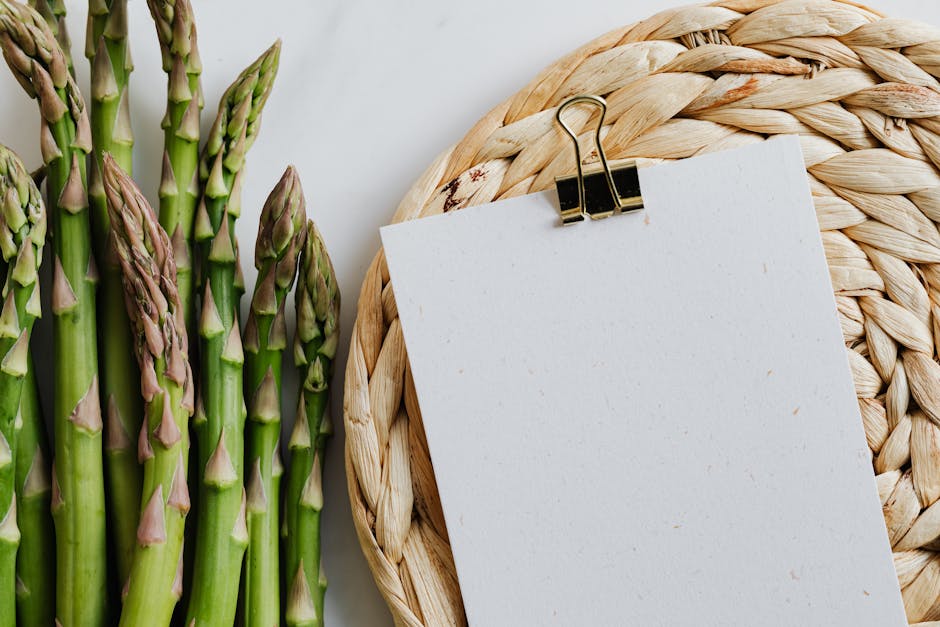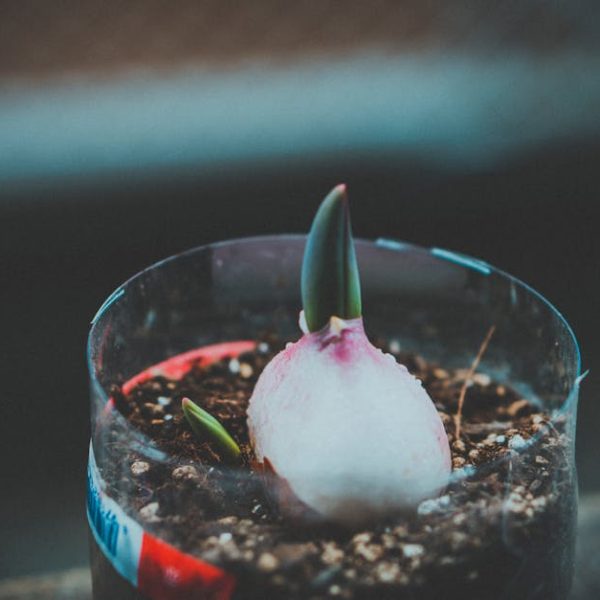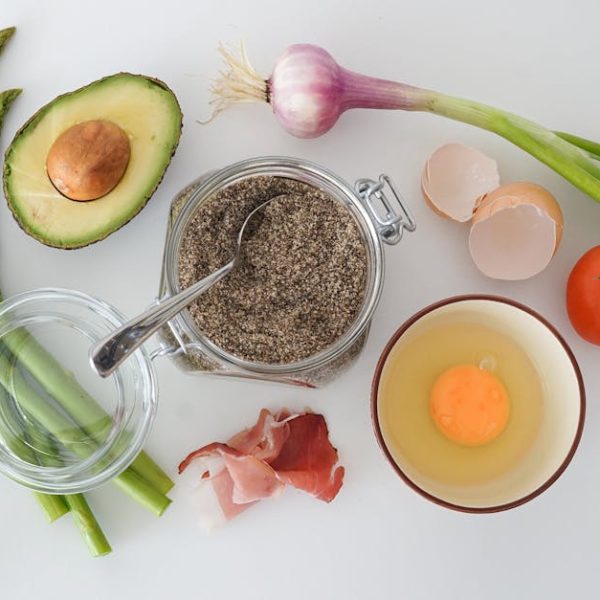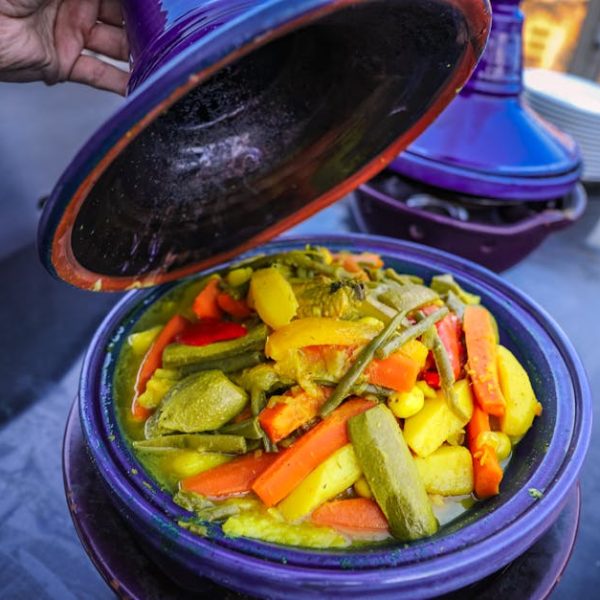At a glance, green and white asparagus may just seem like different versions of the same vegetable. But dig a little deeper and you’ll find they offer unique aspects in terms of color, taste, texture, and preparation methods.
Green asparagus is quite visible in the vegetable aisle, boasting a vibrant green hue, a somewhat grassy flavor profile, and a firm texture that crunches satisfyingly when bitten into. These characteristics make it perfect for cooking methods like grilling and stir-frying, where its robust texture can stand up to high heat.
On the other hand, white asparagus has a rather mysterious appeal. Its creamy hue is the result of being cultivated away from sunlight, resulting in a milder, slightly sweet taste and a tender texture. This delicate composition often requires careful preparation, such as gentle blanching or subtle roasting.
Light Makes The Difference
If you’ve ever wondered why there’s a spectrum in asparagus coloring, the factor lies in the magic (or rather, science) of photosynthesis.
Green asparagus typically grows fully exposed to sunlight. As it reaches for the sky, photosynthesis kicks in, resulting in chlorophyll production, which gives the vegetable its rich, green color. It also lends a certain bittersweet taste that’s mildly akin to fresh spinach.
On the other hand, for the white asparagus to maintain its ghostly palette, farmers skillfully keep the shoots covered with soil or a dark tarp as they grow. This absence of sunlight ensures that photosynthesis and thus chlorophyll production doesn’t occur. The result? The tender, slightly sweet, and unique flavor that white asparagus admirers relish.

Little Difference, Big Benefits
In terms of nutrition, any variances between green and white asparagus aren’t stark enough to tilt a health balance. Both types serve well as low-calorie, highly nutritious additions to your meal plans.
That said, there are slight differences to note. Green asparagus tends to have slightly more fiber and vitamin A due to the photosynthesis process, while white asparagus can have a smidge more Vitamin C and Calcium.
Below is a comparative chart for a quick reference:
| Vitamin C | Vitamin A | Calcium | Fiber | |
|---|---|---|---|---|
| Green Asparagus | 5.6 mg | 756 IU | 24 mg | 2.8 g |
| White Asparagus | 7.2 mg | 570 IU | 25 mg | 2.2 g |
Despite the slight differences, both varieties offer a commendable list of nutrients, making them both worthy additions to a balanced diet.
Kitchen Counter Adventures
Their distinct features make green and white asparagus suited for different culinary adventures. Green asparagus, with its sturdy texture and bold flavor, shines through in dishes like stir-fries and salads. It can also handle grilling, which nicely complements its somewhat grassy flavor. Think of it as your go-to ingredient for adding a pop of color and a fresh crunch to your dishes.
White asparagus, with its sweet and delicate flavor, is a darling ingredient in cream soups and traditional German dishes. It’s also excellent for roasting, where the oven heat gently coaxes out its natural sugar, further enhancing its mild sweetness.

For The Freshness Of It
Whether you’ve got green or white asparagus, proper care and storage will ensure that your delightful spears stay crisp and fresh. Follow this quick checklist to get the most of your asparagus:
- Refrigerate your asparagus as soon as possible. Asparagus starts losing its sweetness once harvested, so keeping it cool will help slow this process.
- Prevent moisture build-up. Once wet, asparagus can quickly become slimy and spoil. Wrap your bunch loosely in a dry paper towel before placing them in the fridge.
- Trim the ends before storing. Just like flowers, asparagus would benefit from a slight trimming at the end before you store them.
- Cook asparagus within a week of purchase. While following the storage guidelines can help maintain freshness, it’s best to plan to use your asparagus within about a week for the best flavor and texture.
Final Thoughts
Many words can describe asparagus—versatile, nutritious, delicious—but perhaps the most fitting is unique. Whether you’re serving up a vibrant green spear that’s been kissed by the sun or a tender white stalk that’s never seen the light of day, it’s clear that this vegetable is a standout.
The next time you’re at the grocery store or farmer’s market, why not pick up a bunch of each? Experiment with their unique qualities and see how they can diversify your meals.
Remember, whether it’s green or white, asparagus is a tasty and healthy addition to your eating plan. So go on, make your plate a playground with these delightful spears.
Key Takeaway:
- Green and white asparagus differ in color, taste, texture, preparation methods, and their growing process. Green asparagus is exposed to sunlight and undergoes photosynthesis, while white asparagus is grown underground or covered to avoid sunlight.
- Despite their differences, both types of asparagus are nutritious and beneficial for health. Green asparagus has more fiber and vitamin A, while white asparagus contains more vitamin C and calcium.
- Green asparagus is ideal for cooking methods such as stir-frying and grilling, whereas white asparagus works best in cream soups, traditional German dishes, and in roasting.
- Proper care and storage are essential to maintain the freshness and prevent spoilage of both green and white asparagus. It’s best to cook it within a week of purchase.
As you explore the wonderful world of asparagus, remember to enjoy each variety’s unique qualities. Try different recipes, and don’t be afraid to experience new flavors. When it comes to asparagus, there’s always something new to discover.
FAQs
Q: Can I substitute green asparagus for white in a recipe?
A: While you technically can, the different flavors and textures of these asparagus can affect the end result. The robust flavor and texture of green asparagus suits high heat cooking, while the delicate white variety enhances mild dishes like cream soups.
Q: How would I know if the asparagus has gone bad?
A: Asparagus typically spoils when it gets slimy or moldy. An off smell or a change in color are also strong indicators the asparagus has expired.
Q: Can I grow both green and white asparagus in my garden?
A: Absolutely! The color of the asparagus is determined by the exposure to sunlight. Green asparagus is exposed to sunlight while white asparagus is kept covered to avoid photosynthesis.
Q: Is there a taste difference between the thicker and thinner green asparagus stalks?
A: Thicker asparagus stalks are often more mature and may have a more robust flavor, while thinner stalks can be more tender and delicate in taste.
Q: Is there a specific season for asparagus?
A: Asparagus are typically available all year round, but they peak in the spring months, particularly from April to June.
Feel free to share this article with others and browse through more helpful posts on our website.






